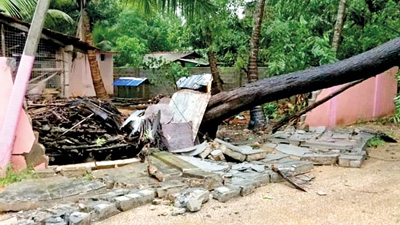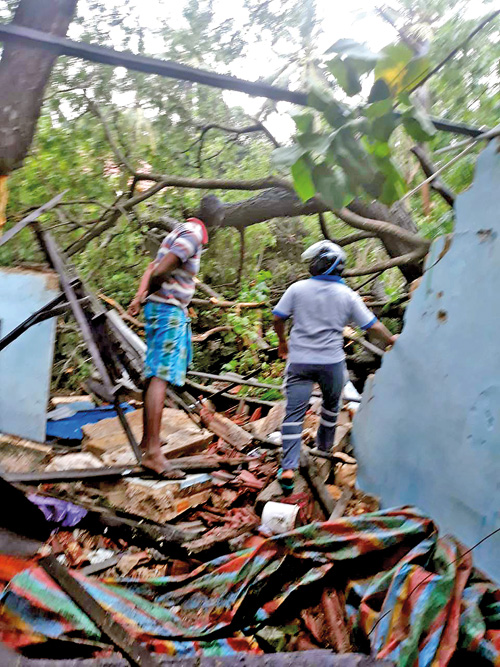News
Relief in battered north as cyclone moves away
The Meteorological Department said the damaging winds and rain along the northern coast have been decreasing from Friday as the cyclonic storm Gaja weakened into a deep depression and moved westwards away from Sri Lanka.

Gaja leaves behind a trail of destruction (above and below).
The severe weather destroyed 52 houses in the Jaffna district and left 700 other homes partially damaged, the Jaffna District Disaster Coordinating Unit said.
In Mannar, district authorities said 15 families had been displaced by floods but the weather was returning to normal.
The Met Department said almost 3,000 families, mostly in the Northern Province, had suffered losses due to flooding, cutting failures and damaged houses.
The department said thundershowers will occur in Central, Sabaragamuwa, North-Central, Uva and Western provinces in the evenings, and light showers in the East and Northern provinces in the mornings.
Landslips of varying degrees have occurred at least 500 times from October 7 to November 14. Less than 10 of these were landslides and the rest were cutting failures, the National Building Research Organisation (NBRO)’s Acting Director, Dr. Gamini Jayatissa said.
“A cutting failure is a failure of unstable cuts in a slope made by people and affects only a small area, whereas a landslide affects a larger area and it happens due to both natural and man-made reasons,” he explained.
“Many houses built in hilly terrain is built on unstable slopes, resulting in frequent cutting failures,” Dr. Jayatissa said, advising people to adapt building plans to sloping sites, siting houses on different levels and using retaining walls.
The NBRO has identified Nuwara Eliya, Matale and Kalutara districts as potential risk areas for landslides. Residents of the Hanguranketha and Walapane divisional secretariats in Nuwara Eliya, Ukuwela in Matale and Bulathsinhala, Mathugama, Ingiriya and Agalawatta in the Kalutara district have been warned of landslides.
The Ministry of Power and Renewable Energy said heavy rains had brought water levels at the six main reservoirs upto an average 85.6 per cent, with the Castlereagh reservoir at 86.6 per cent, Maussakelle at 81.6 per cent, Kotmale at 79.7 per cent, Victoria at 96.6 per cent, Randenigala at 99.2 per cent and Samanalawewa at 51.4 per cent.



